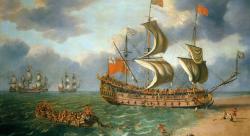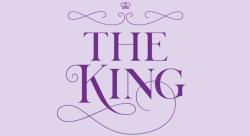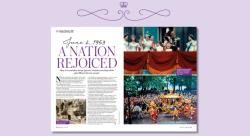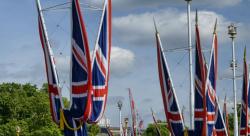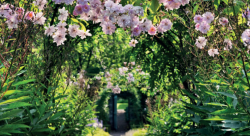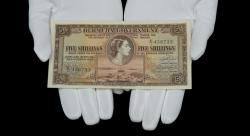
She is our longest serving and arguably most beloved monarch, reigning with unstinting compassion and dignity over a country she never expected to rule. But behind the scenes Queen Elizabeth II’s private passion, and one that still brings her great comfort, has been her unfailing love for the animals that have been her constant companions: her dogs, ponies and racehorses.
Best known are her Welsh corgis, a breed Elizabeth fell in love with in 1933 when her father, King George VI, presented her with Dookie, when she was just seven. She has owned many others since, and went on to cross them with dachshunds to create ‘dorgis’.
She was given another corgi, Susan, on her 18th birthday, and adored her so much that she took the dog on her honeymoon with Prince Philip in 1947. She has since owned more than 30 (all descended from Susan). At one point there were reportedly a dozen roaming the corridors of Buckingham Palace, where they had their own luxury quarters. Her current brood still sleep on hand-crafted wicker beds to avoid draughts, a creature comfort introduced by the Queen Mother.
Today, the Queen has only four dogs: two corgis (Muick, and another whose name has not been revealed), one dorgi, Candy, and a new cocker spaniel called Lissy. The palace won’t discuss the Queen’s pets, insisting they are a private matter. But royal watchers have remained fascinated by herm canine companions.
The recent arrival of Lissy was something of a surprise, as in 2015 it was reported that the Queen had decided to stop breeding corgis so as not to leave any young dogs behind when she died. Lissy also made history as the first dog to break the royal corgi-dorgi tradition.
The Queen’s dogs still come with her to meetings with prime ministers in her private audience room, and have always formed a quirky canine procession to greet special guests at Buckingham Palace (it is suspected that the same applies at Windsor, now her permanent home).
No one is allowed to raise their voice to them or reprimand them, and they have virtually free rein throughout their domain – royal staff carry blotting paper in case of accidents. Indeed, Her Majesty appears to take quiet delight in the fact that her dogs are nippy little creatures who have been known to chase and bite people. (At one point a dog behaviour specialist had to be called in to help modify their assertive behaviour.)
Perhaps it’s because she has always had to keep her own emotions so contained in public life that the Queen enjoys lavishing affection on her often unruly little charges. The dogs’ day begins when they rush into her bedroom after they’ve had their early morning walk with a footman. But the Queen delights in taking solitary afternoon walks with them, before helping to serve them dinner, delivered promptly at 5pm. There’s no canned food – meals are prepared by a chef and include delicacies such as steak and chicken breast, according to Brian Hoey, author of the 2013 book Pets by Royal Appointment. The menu, he says, is typed up daily and pinned up in the kitchen. The Queen puts the meals into individual bowls with a silver ladle, mixing in gravy and crumbled biscuits.
Over the years the royal canines have had their portraits painted, appeared in a cover photo for Vanity Fair in 2016, and have been immortalised in various artworks. At Christmas, Her Majesty makes stockings for her pets, full of dog toys, tempting treats and biscuits. Even in death the little dogs are treated royally: they are buried at a special graveyard on the Sandringham Estate in Norfolk. Queen Victoria buried her beloved collie Noble there as well.

The Queen was given her first pony, Peggy, at the age of four, and was riding by the time she was six. By 18 she was an accomplished horsewoman and reportedly still enjoys riding today at the age of 96. As both princess and monarch she inspected the regiments of the Household Division on horseback at the Trooping the Colour ceremony for almost 30 years. In 1947, when she was 21, she rode a police horse named Tommy, then, when her father was unwell, she borrowed his horse Winston. She last rode in the parade in 1986.
The Queen owns more than 100 racehorses, having inherited the breeding and racing stock of her father. Her racing colours are the same as those used by her father and her great-grandfather, King Edward VII – a purple and scarlet jacket with gold braiding and a black cap.
Horses owned by the Queen have won more than 1,600 races. She, however, never gambles, though it’s been reported that she reads the Racing Post each morning over breakfast.
As with her dogs, she has taken a keen interest in the breeding of her racehorses, and she is the patron of the Thoroughbred Breeders’ Association. She visits her horses from the time they are foaled at the Royal Stud at Sandringham. They then go to be raised at Polhampton Lodge Stud in Hampshire before they are passed on to the training facilities of any one of seven trainers. Once they finish racing they remain in her care into retirement, unless they are sold as bloodstock.
The Queen also breeds Shetland ponies at Balmoral and fell ponies at Hampton Court. She can still be seen, occasionally, riding one of her Dales ponies in the grounds at Windsor. The Queen is relatively conservative when compared with other royals and their chosen pets. George V had a celebrated parrot, Charlotte, who was given to him in 1916. The bird features in a photograph of the two-year-old future Queen taken with her paternal grandmother Queen Mary and Alexander, Earl of Athlone in 1928.





